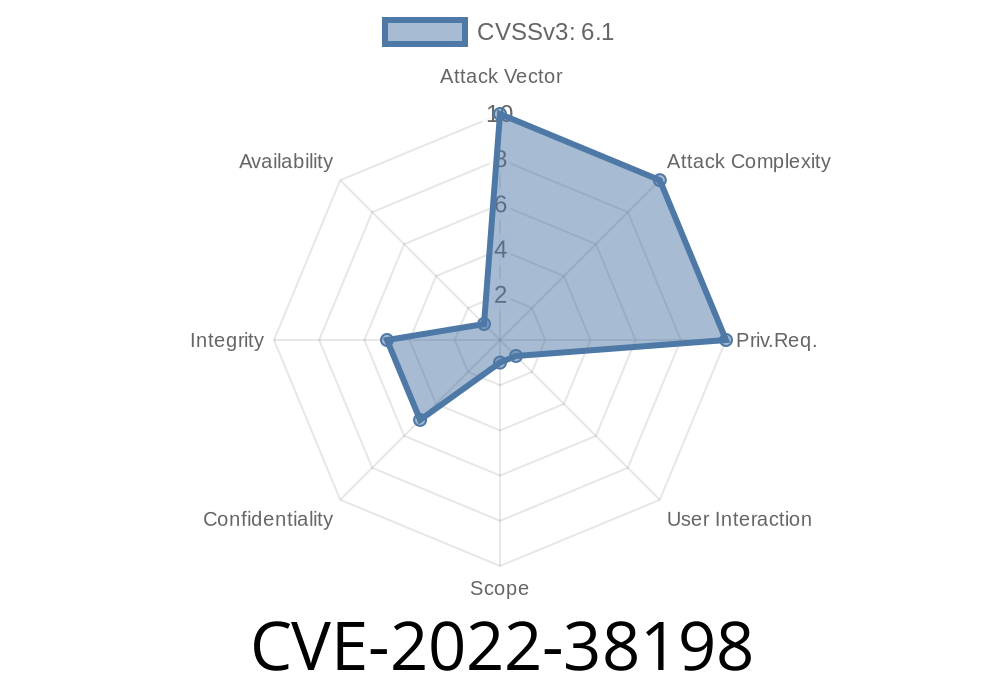CVE-2022-38198 is a security vulnerability that has been identified in the Esri ArcGIS Server services directory for versions 10.9.1 and below. A remote, unauthenticated attacker could potentially exploit this issue to execute arbitrary JavaScript code in a user's browser, putting the victim's privacy and security at risk. In this long-read post, we'll be discussing the details of the vulnerability, how it can be exploited, and ways to mitigate the issue. We'll also be providing code snippets and links to original references to help you better understand the problem and protect your systems from potential harm.
Exploit Details
The vulnerability exists because the Esri ArcGIS Server services directory does not properly validate or sanitize user-supplied input, which allows for the injection of malicious code, leading to a reflected cross-site scripting attack (XSS). Reflected XSS attacks occur when a user clicks on a crafted, malicious link sent by the attacker, and the injected JavaScript code is executed in the victim's browser. The impact of this type of attack can range from stealing cookies and session information to installing malware or performing actions on behalf of the victim.
Code Snippet
The following is a simple example of the exploit that can be used to trigger the XSS vulnerability in the Esri ArcGIS Server services directory:
<a href="http://vulnerable-arcgis-server/arcgis/rest/services?name=<script>alert(1)</script>">Click here to trigger the exploit</a>
When a user clicks on the above link, the injected JavaScript code (in this case, an alert box) will be executed in the victim's browser, provided that the server is vulnerable.
Original References
- This vulnerability was initially disclosed by the researcher Youssef Chahibi on October 4th, 2022. You can find the original CVE post here: CVE-2022-38198
- The corresponding NVD page
- The Esri Security Bulletin explains the issue and provides recommendations for mitigation and links to register for a security patch.
To mitigate this vulnerability, Esri has provided the following recommendations
1. Upgrade to ArcGIS Server 10.9.1 Patch 3 or a later version, which contains the security fix for the vulnerability. You can find the official patch announcement and download link at Esri's ArcGIS Server 10.9.1 Patch 3 page.
2. If you are unable to upgrade immediately, consider implementing an input validation and sanitization mechanism to ensure user-supplied data is harmless before allowing it into your application. Make sure it effectively blocks any attempt to inject code, such as JavaScript, into your system.
3. Educate your users about the risks of clicking on unknown links and encourage them to report any suspicious emails or messages to the security team.
Conclusion
CVE-2022-38198 is a critical vulnerability that can put your users and systems at risk. It is essential to patch your systems, implement secure coding practices and create a strong security culture among your users and developers. Stay informed about the latest security updates and best practices, and remain vigilant in protecting your information and systems from potential attacks.
Timeline
Published on: 10/25/2022 17:15:00 UTC
Last modified on: 10/26/2022 00:49:00 UTC
